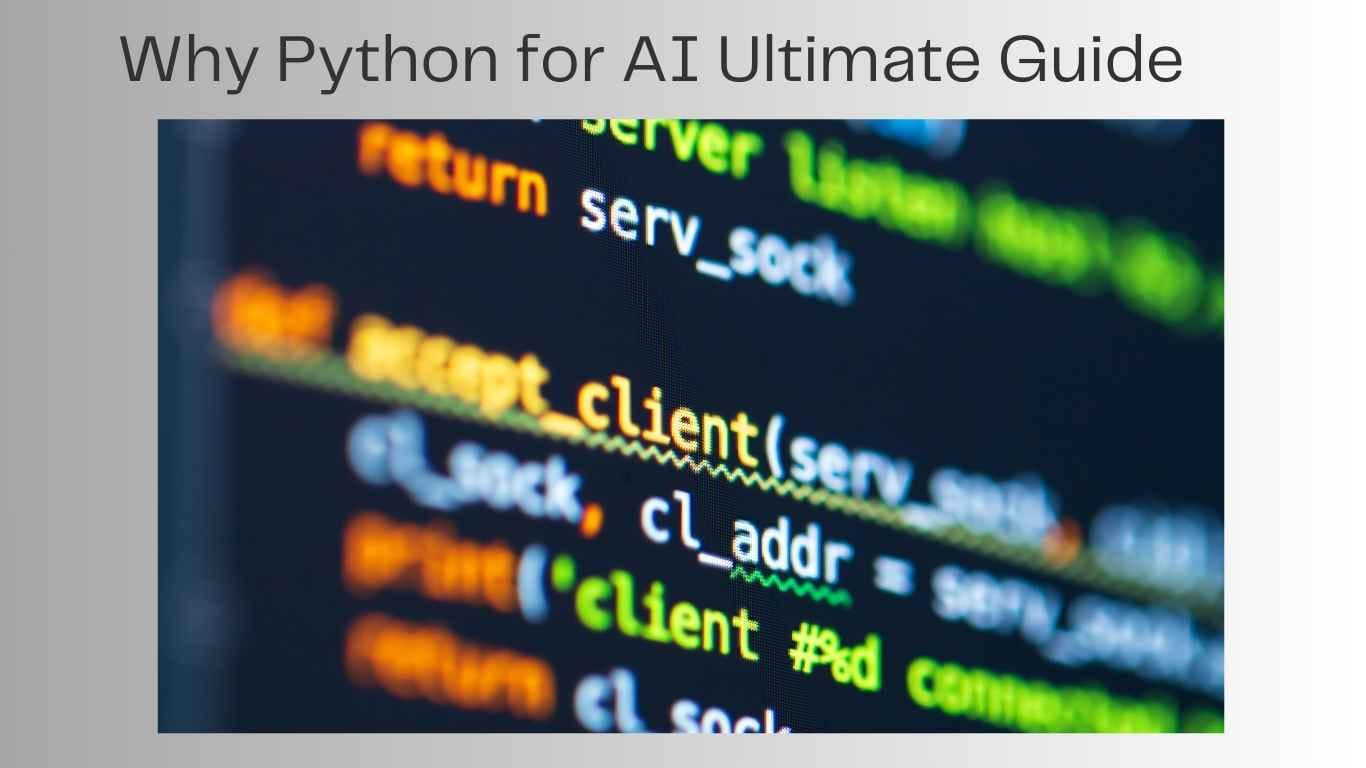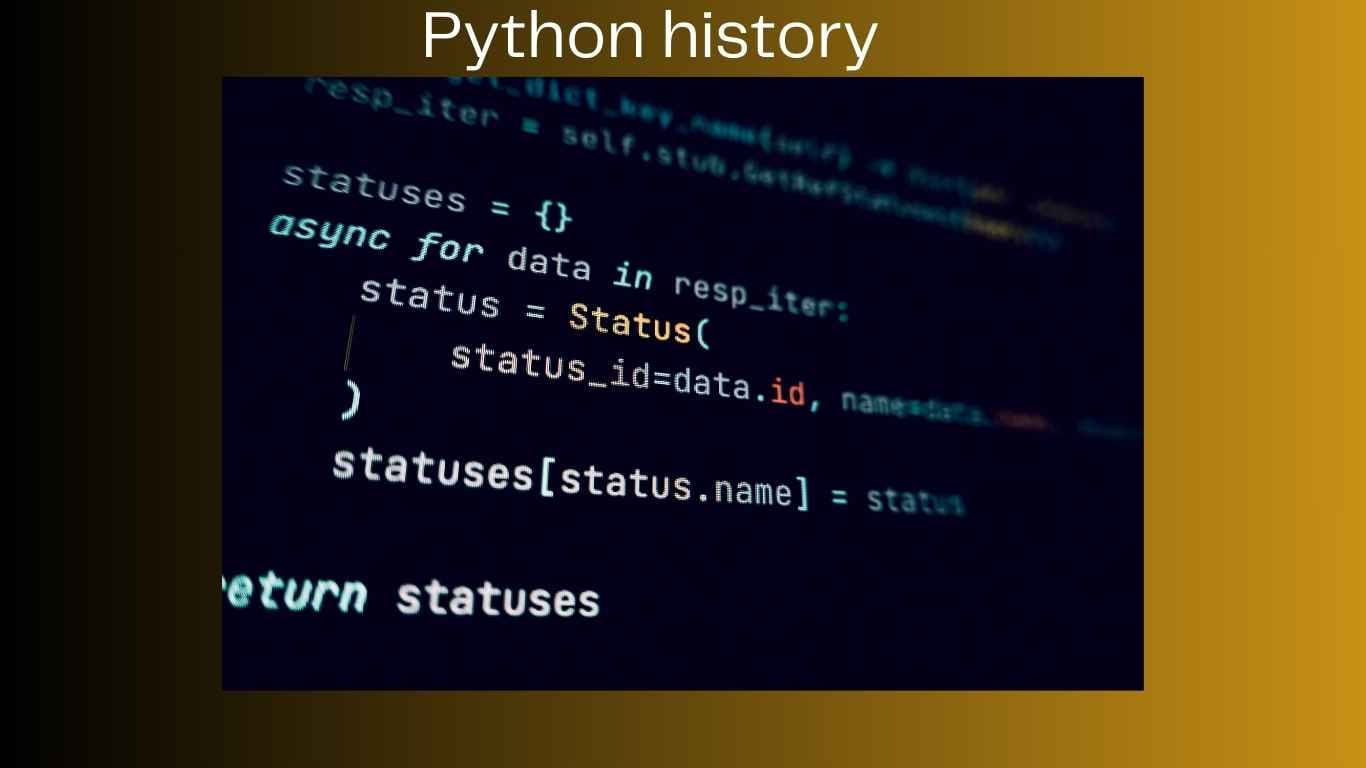Why Python for AI Best Guide 2025
🤖 Why Python for AI? Key Reasons Python is the Top Choice for Artificial Intelligence
In today’s rapidly evolving tech world, Artificial Intelligence (AI) is transforming every industry—from healthcare and finance to entertainment and logistics. At the core of this AI revolution lies one dominant programming language: Python.
But why is Python considered the best language for AI?
In this in-depth article, you’ll learn why Python has become the first choice for developers, researchers, and companies building AI and machine learning (ML) solutions. We’ll explore its unique strengths, real-world applications, popular libraries, and how you can start using Python for AI—whether you’re a beginner or a seasoned developer.
🧠 What is Artificial Intelligence?
Artificial Intelligence refers to the development of computer systems that can perform tasks requiring human intelligence, such as:
- Learning from data (Machine Learning)
- Understanding language (NLP)
- Recognizing patterns and images (Computer Vision)
- Making predictions and decisions
AI systems need powerful, flexible, and reliable programming languages to build and train models—and Python is the reigning champion in this domain.
🐍 Why Python is the Best Choice for AI
Python wasn’t originally designed for AI, yet it has become the most-used language for AI, ML, and data science.
Here’s why.
📝 1. Simplicity and Readability
AI involves complex mathematical models and algorithms. Python’s easy-to-read syntax allows developers to focus on solving AI problems, not wrestling with the language itself.
Example:
from sklearn.linear_model import LinearRegression
model = LinearRegression()
model.fit(X_train, y_train)
This code trains a simple machine learning model in just three lines—clear, concise, and powerful.
📚 2. Powerful AI Libraries and Frameworks
Python has the richest ecosystem of libraries for AI development. These libraries save time and effort by offering pre-built functions and algorithms.
Some of the most popular AI libraries include:
- TensorFlow – Open-source library by Google for deep learning.
- PyTorch – Widely used for research and production, developed by Facebook.
- scikit-learn – Classic machine learning models (regression, classification).
- Keras – High-level neural networks API, runs on TensorFlow.
- OpenCV – For computer vision tasks.
- NLTK & spaCy – For natural language processing.
These tools make it incredibly easy to experiment, build, and deploy AI applications.
🧪 3. Ideal for Prototyping and Experimentation
AI development involves a lot of trial and error. Python’s dynamic nature makes it perfect for quick prototyping, testing, and model iteration.
You can:
- Test a new ML model quickly
- Tweak hyperparameters in real-time
- Visualize results instantly using libraries like
matplotliborseaborn
This agility is critical when working with complex AI systems.
🌍 4. Vast Community and Documentation
Python has one of the largest developer communities in the world, especially in AI and ML.
What this means:
- Thousands of open-source projects and GitHub repositories
- Tons of tutorials, videos, and forums
- Quick help on Stack Overflow
- Extensive official documentation
Beginner Benefit: You’re never stuck alone—solutions are just a search away.
🧠 5. Seamless Integration with Other Technologies
Python easily integrates with other tools and platforms like:
- C/C++ (for performance-critical tasks)
- Java, .NET
- APIs, Web servers, Cloud platforms
- Big Data tools like Hadoop or Spark
You can build full-stack AI applications using Python for AI logic and frameworks like Flask or FastAPI for deployment.
💻 6. Cross-Platform Compatibility
Python is platform-independent, so AI solutions developed on one system (e.g., Windows) can easily run on others (e.g., Linux, macOS).
This is especially important for deploying AI models to cloud services like AWS, Azure, or Google Cloud.
📈 7. Data Handling and Visualization Capabilities
AI systems are data-hungry. Python offers robust tools for data processing:
Pandas– For structured dataNumPy– For numerical computationsMatplotlib,Seaborn,Plotly– For visualization
You can clean, manipulate, analyze, and visualize huge datasets—all using Python.
🧑🎓 8. Learning Resources and Beginner-Friendly
Python’s simplicity, combined with its powerful AI tools, makes it the ideal language to start learning AI.
Top platforms like:
- Coursera
- Udemy
- edX
- Google’s AI Hub
- YouTube (e.g., freeCodeCamp)
… offer comprehensive AI courses using Python, making it accessible to students and newcomers.
🧾 Real-World Applications of Python in AI
Let’s explore how Python is used in real business and industry applications.
📦 1. Recommendation Systems
- Netflix recommends shows using Python-based AI models.
- Amazon uses Python to power its product recommendation engines.
Libraries used: scikit-learn, pandas, NumPy
🗣️ 2. Natural Language Processing (NLP)
- ChatGPT, Google Assistant, and Siri are built using NLP models trained in Python.
- Python libraries like
spaCy,transformers, andNLTKprocess and understand human language.
🧬 3. Healthcare AI
- AI models built in Python diagnose diseases from X-rays and MRIs.
- Predictive analytics in Python help forecast patient risks.
Libraries: TensorFlow, PyTorch, OpenCV
📸 4. Computer Vision
- Python is used to develop AI for facial recognition, autonomous driving, and medical imaging.
Example:
Tesla’s self-driving AI uses computer vision models written in Python to detect lanes, objects, and traffic signs.
🏦 5. Finance and Fraud Detection
- Banks use AI written in Python to detect fraudulent transactions.
- Predictive models in Python help forecast stock prices and customer behavior.
🏥 6. AI in Education
- Platforms like Duolingo use Python for AI-powered adaptive learning.
- Python is also used in student performance prediction systems.
🧑💼 Why Students and Beginners Should Learn Python for AI
Here’s why Python is ideal for students entering the world of AI:
- Gentle learning curve
- Real-time feedback in Jupyter or Colab
- Easy project development
- Instant career value (Python + AI = high demand)
- Universally accepted in academia and industry
💼 Career Opportunities with Python in AI
If you’re proficient in Python and AI, these job roles await you:
- AI/ML Engineer
- Data Scientist
- NLP Engineer
- Computer Vision Developer
- AI Researcher
- Python Developer (AI-focused)
Top recruiters include:
Google, Facebook, Microsoft, Amazon, TCS, Infosys, Accenture, and countless startups.
🧭 Getting Started: How to Use Python for AI
- Learn Python basics (variables, loops, functions)
- Understand data structures (lists, dictionaries, NumPy arrays)
- Learn AI/ML concepts (supervised, unsupervised learning)
- Explore libraries like scikit-learn, Keras, TensorFlow
- Use Jupyter Notebook or Google Colab for practice
- Build projects: sentiment analysis, image classifier, movie recommender
🧩 Limitations of Python in AI
Python is amazing, but not perfect. Some drawbacks:
- Slower execution speed compared to C++
- Mobile development support is limited
- Memory usage is high for large datasets
- Sometimes hard to deploy in resource-constrained environments
However, these are rarely blockers due to workarounds and integrations.
Also read these
✅ Final Thoughts: Why Python Is the Backbone of AI
Python’s rise in AI isn’t just a coincidence. It’s a powerful, intuitive, and scalable language that makes AI development faster, smarter, and more accessible.
Whether you’re training an image classifier, building a voice assistant, or analyzing user behavior, Python provides the tools and support to get it done efficiently.
If you’re serious about AI, Python isn’t just an option—it’s a necessity.




